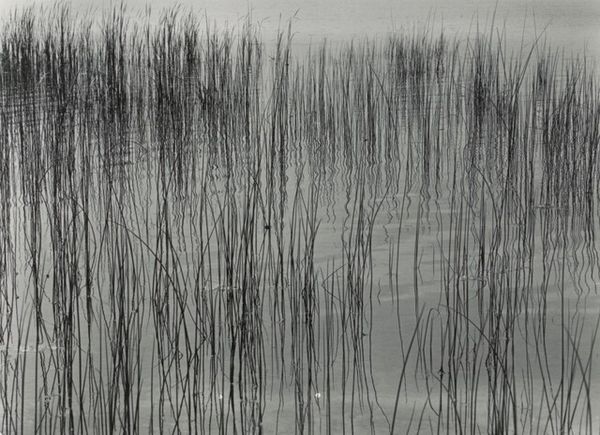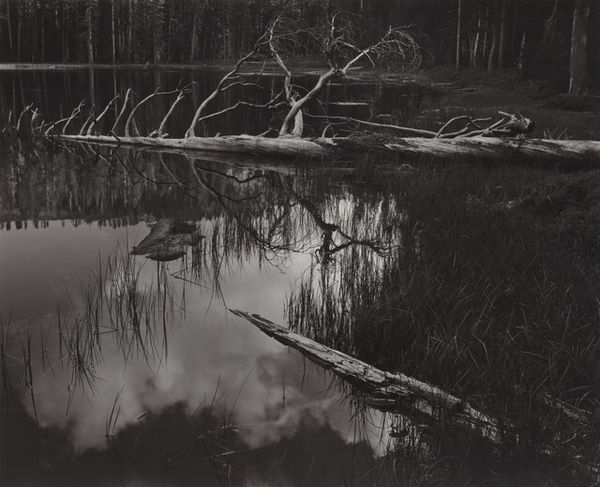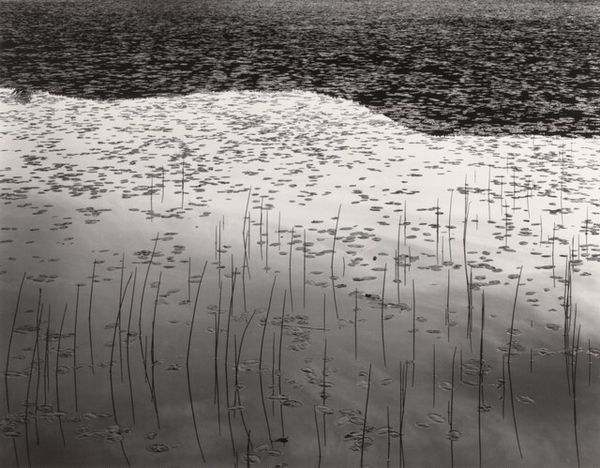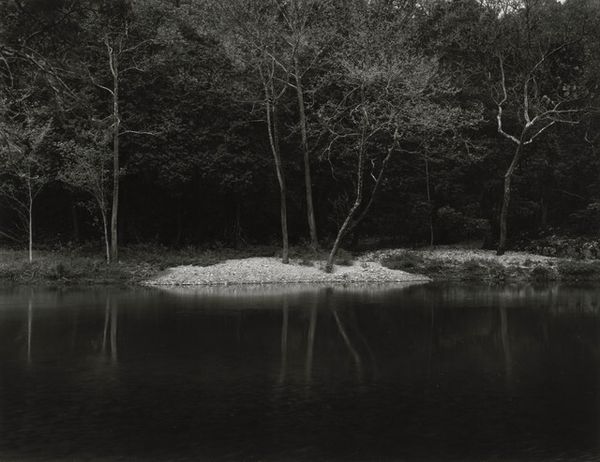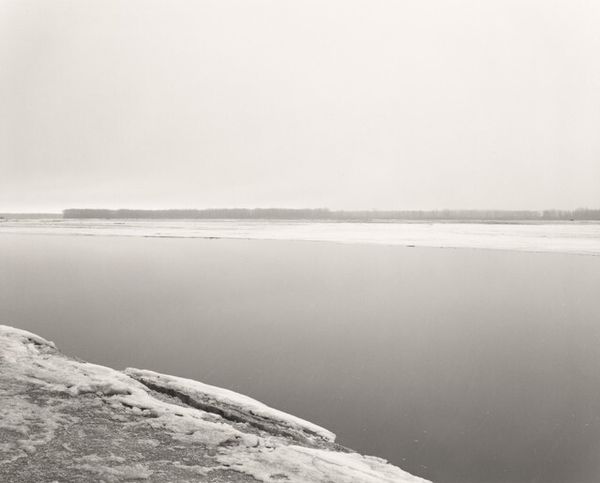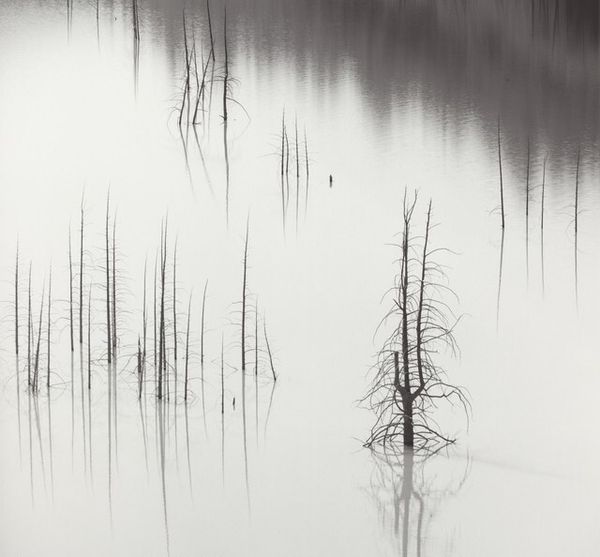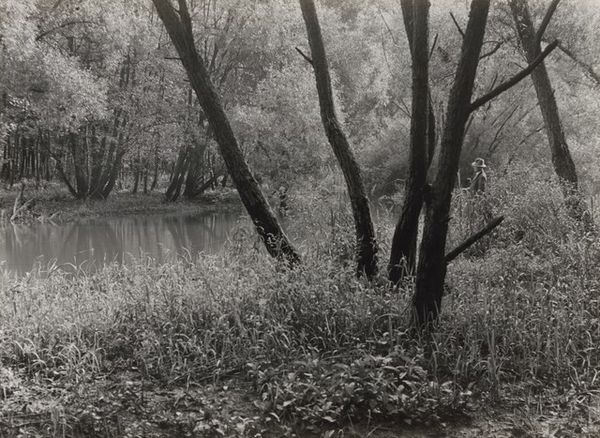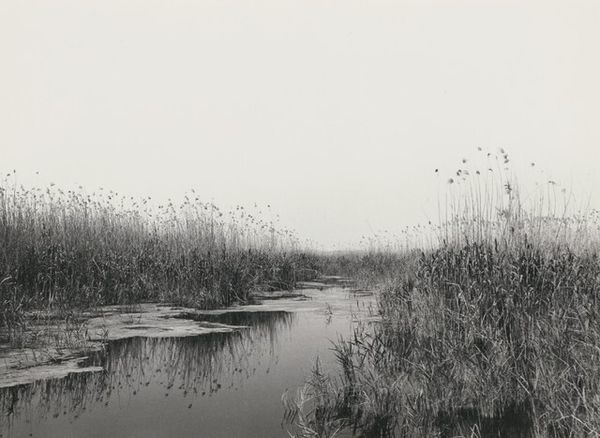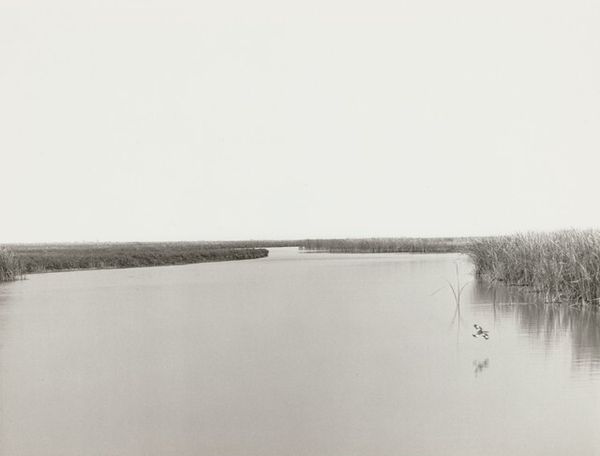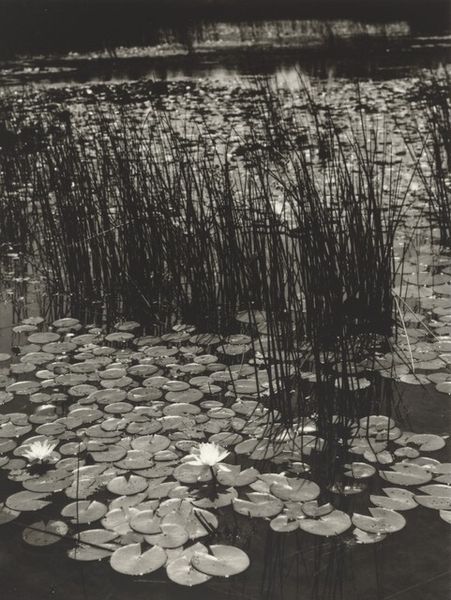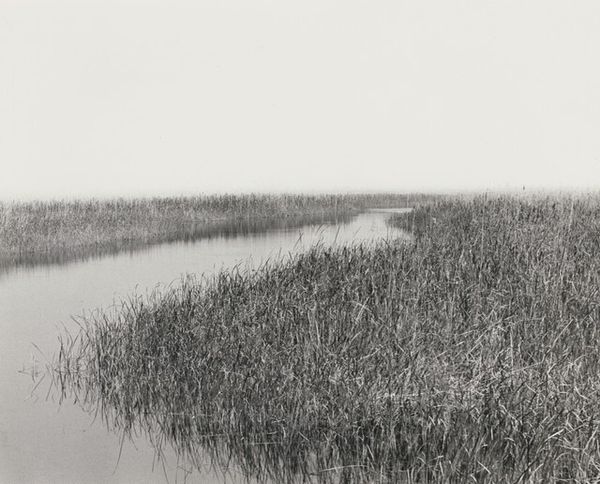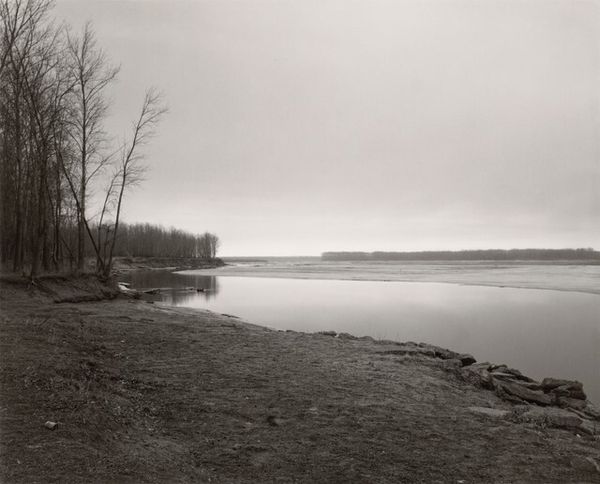
Rock and Grass, Moraine Lake, Sequoia National Park, California c. 1932 - 1981
0:00
0:00
Dimensions: overall: 45.4 x 36.2 cm (17 7/8 x 14 1/4 in.)
Copyright: National Gallery of Art: CC0 1.0
Editor: So, this is Ansel Adams’s "Rock and Grass, Moraine Lake, Sequoia National Park, California," a gelatin silver print made sometime between 1932 and 1981. The stillness of the water and the stark contrast between light and dark really give it a meditative quality. What stands out to you when you look at this photograph? Curator: Well, beyond the undeniable beauty, it's impossible to ignore the political context surrounding Adams's work. His landscapes, particularly those of national parks like Sequoia, became powerful tools in the environmental movement. Think about the Sierra Club, and how Adams' images were strategically used to advocate for wilderness preservation. Editor: That makes sense. The image definitely evokes a sense of protecting this untouched space. Curator: Exactly. And consider the *idea* of "untouched." Were these landscapes really untouched before colonization, or were Indigenous people erased from the narrative to create this ideal of pristine wilderness? That's a critical question when we examine these seemingly straightforward nature photographs. Also, how accessible was this “preserved” land to different socioeconomic groups? Did it primarily benefit a select few? Editor: So you're saying his work is more than just pretty pictures. They represent a complex intersection of nature, politics, and social issues. Curator: Precisely. While his mastery of photography is clear, appreciating Adams also means grappling with the social forces that shaped his vision and how that vision impacted public perception and policy around environmentalism. What do you think of pictorialism as a style that's mentioned as a relevant descriptor of this image? Editor: I guess it sought to bring artistic sensibility into photographic practice... which leads me to a deeper appreciation of landscape photography and its impact on our understanding of the American West. Thanks for your insights! Curator: My pleasure.
